Saving time and money on your Texas landscape can be as easy as installing the right native plants.
Native plants are highly drought-resistant and heat-stress tolerant. That means they require less water and maintenance than even non-native sustainable varieties. Even with reduced upkeep, they’ll thrive on your commercial property.
There are numerous Texas native trees, shrubs, grasses, flowers, and groundcover plants to choose from.
That’s why we’re highlighting 23 of the best native plants to consider including in your sustainable Texas landscape. All these plants are specifically native to Texas, not just plants that adapt “pretty well” to the climate. These are native and sustainable, having evolved naturally in this region, climate, and ecosystem for centuries.
You’ll also get access to six new additions to the list from a Yellowstone Landscape designer who adjusts his favorite native plants as climate conditions change in the Southwestern U.S.
There’s also a new plant category coming up, plus, we added the number one benefit or use of all 29 species.
Texas Native Shade Trees
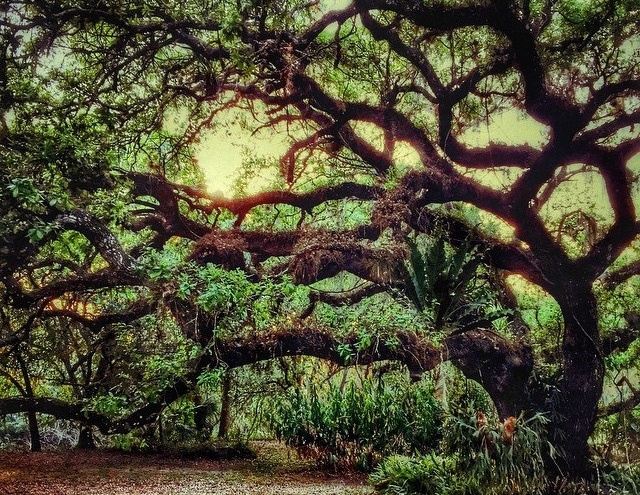
Three of the best choices are:
- Live Oak
- Cedar Elm
- Eastern Red Cedar
Texas summers can cause serious heat stress for turf and foliage. Native shade trees help protect those smaller plants and give people relief from extreme temperatures. And because shade trees provide such beauty and functionality, native varieties like the three listed above should provide that value for decades.
Large trees are the most expensive part of your landscape. So, choosing truly native trees over sustainable non-native trees gives you the best value.
Key features of these shade trees:
Live Oaks (evergreen): Can be planted in any region around early fall. They are fairly slow growing, need full sun, and can reach 30 to 50 feet tall with a 50-foot wide canopy. Avoid planting Live oaks close to sidewalks and parking lots as large roots systems can damage hardscapes.
A top benefit of a Live oak tree is the prestigious, established appearance that attracts high-quality commercial tenants.
Cedar Elm (deciduous): Plant in the fall in full sun. They grow at a moderate rate, topping out at 25 to 50 feet high with a 25 to 35 feet spread. Its leaves evolve into yellow before dropping.
Being storm-resistant is the best feature of this Texas native shade tree.
Eastern Red Cedar (evergreen): A good screening tree, the Eastern red cedar is good in areas from Austin to East Texas. This tree grows quickly and should be planted in early fall. It needs full sun and grows 30 to 40 feet tall and 10 to 20 feet wide.
This native species comes with the main bonus of attracting a variety of birds, which add visual interest and biodiversity.
Texas Native Ornamental Trees
Yellowstone Landscape recommends the following:
- Desert Willow
- Mexican Redbud
- Texas Mountain Laurel
Native ornamental trees provide eye-catching color along with unique seasonal changes.
Key features of these ornamental trees:
Desert Willow (deciduous): Fast-growing and has flowers spring through summer. The flowers and leaves can be messy, however. It grows 15 to 25 feet tall with a 15 to 25-foot spread. The Desert willow should be planted in sunny areas in early fall.
The most impressive feature is this native species’ durability during high heat.
Mexican Redbud (deciduous): Provides excellent color in the spring, which can last up to four weeks. The ornamental grows 12 to 15 feet high with a 12 to 15-foot canopy spread. It needs sun to partial shade and should be planted in early fall.
The top attribute of the Mexican redbud is marketing opportunities, as spectacular blooms create photo backdrops for seasonal promotions.
Texas Mountain Laurel (evergreen): Performs well in any Texas region, but thrives in Dallas, Austin, and San Antonio. The tree has fragrant purple blooms in early March lasting about three weeks. Plant them in early fall in areas with sun or partial shade. These very slow growers will reach 10 to 20 feet tall with an 8 to 12-foot spread.
Its unique appeal is being one of the few Texas ornamental trees that produce flowers and is evergreen.
Texas Native Vines (New Category)
Two great vines for Texas sustainable landscapes are:
- Crossvine
- Passion Vine
Why are vines desirable in outdoor spaces? They’re great for vertical interest and can be added to pergolas for extra shade. Some landscapes use vines to drape plant containers and screen parts of “outdoor rooms.”
Details on these native vines are below:
Crossvine: Semi-evergreen and grows quickly. It’s very low-maintenance and is terrific for attracting pollinators.
Its top use may be its ability to “soften” hardscape elements.
Passion Vine: Slow growing with a relaxing lavender color. Being deciduous, it can lose some visual appeal during winter.
This vine’s most popular trait is the tropical feel it provides.
Native Shrubs
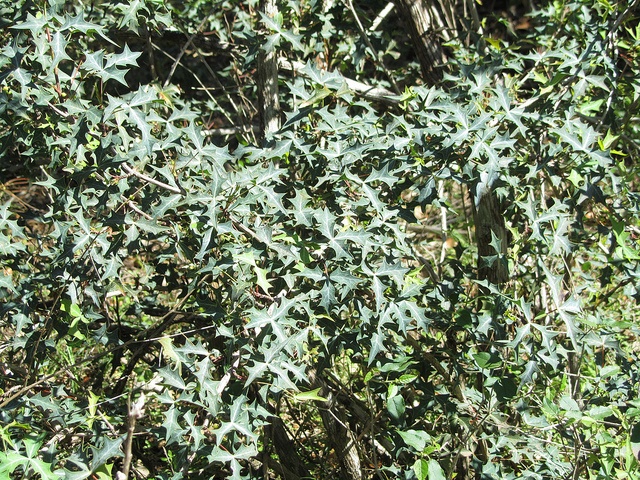
Three proven shrubs for Texas landscapes are:
- Agarita
- Texas Sage
- Flame Acanthus
Shrubbery helps filter air pollution, attracts beneficial wildlife, and creates natural borders.
Features of each native shrub include:
Agarita (evergreen): Produces color explosions with yellow flowers and red berries February to April. The shrub has tough, prickly leaves, so these shouldn’t be used in areas with high levels of pedestrian traffic. They grow 3 to 6 feet high with a 3 to 6-foot spread, and need sun to partial shade. Plant them in early spring or early fall.
This native shrub may be best known as a great alternative to Hollies.
Flame Acanthus (deciduous): These thrive east of Austin to Houston. They have red-orange flowers from summer through fall and attract hummingbirds and butterflies. They have both a 3 to 4-foot height and spread. They require sun to partial shade and should be planted in early spring or fall.
Its top trait is the intriguing activity generated by beneficial pollinators.
Texas Sage (evergreen): Provides bountiful purple flowers several times during the growing season. They grow best when planted in early spring or early fall in full sun. The height and spread both reach 4 to 5 feet. Texas sage is best for Central Texas to the Valley, but can be planted in Houston as well.
Yellowstone Landscape designers enjoy the seasonal wow factor of this Texas shrub’s multiple bloom cycles.
Texas Native Perennials
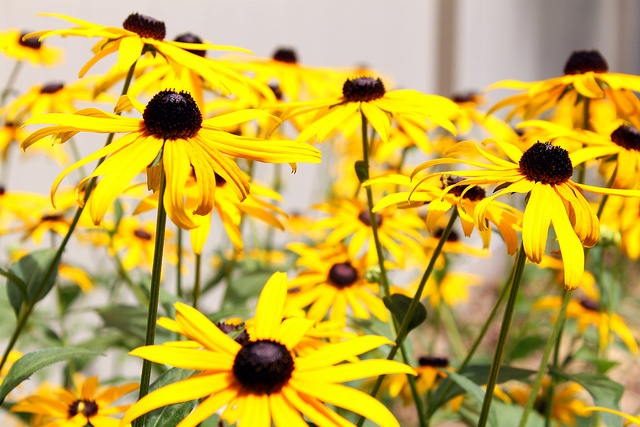
These four perennials are hard to top:
- Esperanza
- Rock Rose
- Texas Lantana
- Black-Eyed Susan
Perennials provide years of seasonal regrowth, which helps you get the most from your landscape budget.
Details of each perennial are below:
Esperanza (deciduous): These perform well statewide, growing 4 to 8 feet tall and spreading 4 to 6 feet. The ideal planting time is early spring or fall in full sun. Its eye-pleasing yellow flowers last from spring through fall.
The best thing about Esperanza is its fast establishment, which is great when you want natural screening.
Rock Rose (deciduous): This smaller perennial grows about 2 feet in height and spread. When planted in early spring or fall in either sun or partial shade, it’s a healthy option across all of Texas. The Rock rose is great for adding color (pink) to shady spots.
The best thing about this native perennial is the soft, welcoming blooms.
Texas Lantana (deciduous): Best planted in full sun in early spring or fall, it grows 3 to 5 feet tall with a 4 to 6-foot spread. Its bold orange-yellow flowers remain attractive (to people and butterflies) during the summer through fall.
The unique benefit of Texas lantana is heat tolerance, as it can thrive even when the heat-island effect is spiking.
Black-Eyed Susan (deciduous): This native species is best suited for Central Texas and the Houston area. Producing yellow flowers all summer, it needs full sun and grows 1 to 2 feet tall with a similar spread. It highlights sustainability efforts through biodiversity as it entices a variety of pollinators.
The option for using this perennial in cut flower arrangements is what sets it apart from other sustainable perennials.
Texas Native Prickly Plants
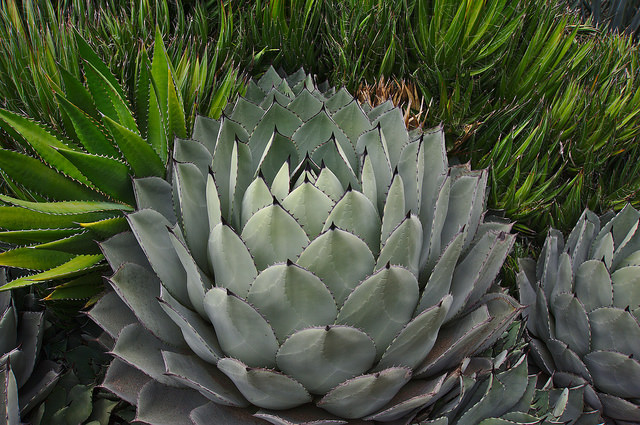
Texas is known for specialty plants—the following are our top picks:
- Red Yucca
- Texas Sotol
- Century Plant
- Prickly Pear Cactus
Each of these has prickly foliage. So, you don’t want their sharp thorny edges easily accessed by people.
Let’s look closer at each species:
Red Yucca (evergreen): This versatile prickly plant can be installed statewide anytime during the year. They reach up to 6 feet tall with a 4-foot spread. They thrive in full sun showing off vibrant red flowers on drooping stalks during summer months.
The most popular use of the Red yucca is adding a modern sculptural look to commercial properties.
Texas Sotol (evergreen): It thrives in Central Texas mainly, but can be planted during any season as long as it gets full sunlight. Featuring engaging flowers atop tall stalks, it reaches heights of 3 to 4 feet while spreading up to 4 feet.
This specialty plant’s best trait (but little-known) is fire-resistance, making it ideal for wildfire-prone locations.
Century Plant (evergreen): Thrives in every Texas region, growing up to 6 feet tall with an 8 to 10-foot spread. It offers flexibility in sunlight requirements. The Century plant has a single, yet dramatic bloom amid its blue-gray leaves.
The plant’s best feature is perhaps its ability to thrive with zero irrigation once established.
Prickly Pear Cactus (evergreen): Can reach 4 feet in height and spread, this native plant is best for Central Texas. It needs full sun but can be installed any time of year. Its notable yellow blooms arrive in late spring lasting through most of the summer.
What property owners like best is the Prickly pear cactus is an iconic symbol of Texas heritage.
Native Texas Ornamental Grasses
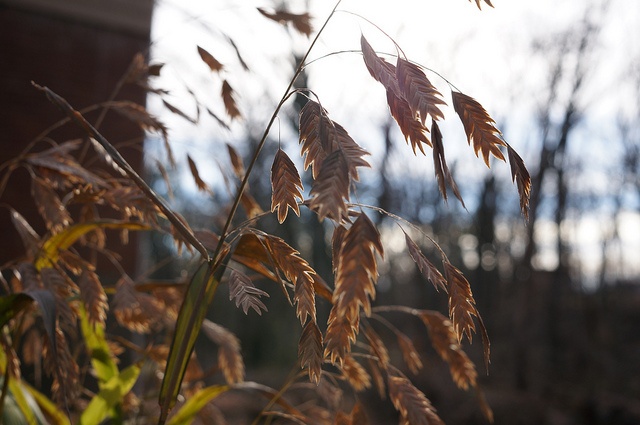
Topping our list of ornamental grasses are:
- Big Muhly
- Gulf Muhly
- Inland Sea Oats
Ornamental grasses offer drought tolerance and pest resistance for Texas property owners. They also offer a wide range of textures, heights, and colors for visual interest, plus deep roots can prevent erosion.
Insights into these Texas ornamental grasses are below:
Big Muhly (semi-evergreen): These amazing grasses work well across the state when installed in early spring or fall. They thrive in full sun, spanning 3 to 4 feet wide and tall. Big muhly feature feather-like seed heads in autumn.
This ornamental grass’s top feature is the creation of hypnotic movement on breezy days instead of relying only on colorful displays.
Gulf Muhly (deciduous): Available for installation statewide, this deciduous ornamental grass can grow to 2.5 feet tall and spread up to 3 feet. For ideal outcomes, plant in early spring or fall using full sun to partial shade. The visual payoff is heightened in the fall when soft pink seed heads appear.
The number one appeal of the Gulf muhly is the small size—perfect for “postage-stamp” sized green spaces.
Inland Sea Oats (deciduous): Works across Texas, but is ideal for the Houston area. Planting needs to happen in early spring or fall. This plant is fine with partial sun and will reach up to 4 feet tall and spread 3 to 6 feet.
Functionality is the best attribute, as its root system helps control erosion, making it ideal on slopes in flood-prone locations.
Texas Native Groundcovers
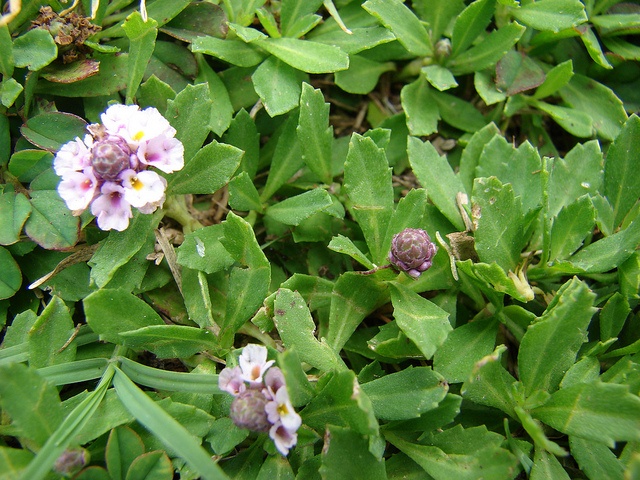
The three best groundcover plants are as follows:
- Frogfruit
- Horseherb
- Silver Ponyfoot
Not only does groundcover produce an array of curb appeal options—it can help with property goals. It suppresses weeds, reduces erosion, and improves soil moisture and quality.
Notes on each of the top Texas groundcovers are below:
Frogfruit (deciduous): Can be utilized statewide if planted in early spring or fall. Its sunlight needs are flexible. The species grows in heights of 1 to 6 inches while spreading outward from 1 to 4 feet. The plant’s small white flowers spread rapidly, attracting butterflies and human attention.
Many property owners say the best thing about Frogfruit is the fast spread reduces the need for adding mulch to beds.
Horseherb (evergreen): Typical height is 6 to 12 inches, spreading out up to 12 inches, and this groundcover thrives in all Texas regions. Blooms are tiny but plentiful year-round. Competing with nearby turf grass is a potential downside.
The best thing about Horseherb is how it can thrive where traditional turfgrass cannot (reduces mowing and watering costs).
Silver Ponyfoot (evergreen): All of Texas is suited for planting Silver ponyfoot. The native groundcover has flexible sunlight needs. Once established after early spring or fall planting, its blue-gray carpet-like foliage spreads fairly fast.
Being dense and durable makes this plant a top pick for areas that see above-average foot traffic.
That list is comprehensive. However, climate conditions are changing so, we asked one of our company’s Texas-based landscape designers to weigh in with some updated native plant options.
Alternative Native Plants for Sustainable Texas Landscapes
Salvia Greggi (evergreen): This shrub grows great across all of Texas, reaching heights and spreads 2 to 3 feet. It can be planted in spring or fall in full sun or partial shade. This unique native plant shows its blooms from spring all the way to the first frost and is popular with hummingbirds.
The best trait is the lengthy bloom period for curb appeal during seasonal peak business periods (e.g., at retail properties).
Damianita (evergreen shrub): A hardy shrub ideal for Central and West Texas. Needs full sun and should be planted in spring or fall. It grows 1 to 2 feet tall with a 2 to 3-foot spread. It's so drought-tolerant it often grows from within cracks in rocks!
What landscape designers love most about Damianita is reducing replacement costs for clients since it survives the harshest conditions.
Turk’s Cap (mostly deciduous): A larger shrub with heights of 3 to 6 feet and spreads of 3 to 4 feet. Ideal for East and Central Texas and suited for spring or fall installations. It thrives in partial to full shade.
For property owners with high environmental goals, Turk’s cap is a top choice.
Heartleaf Skullcap (evergreen or deciduous, depending on environment): A drought-tolerant ground cover that works well in all of Texas. It grows up to 3 feet tall with a typical spread of 2 feet. It grows nicely in shade or partial shade when planted properly in spring or fall.
Perhaps the best use of Heartleaf skullcap is covering unsightly foundations or corners at minimal cost.
Hopefully, that updated list helps you with native plant selection. Just remember that your specific site conditions play a huge part in selection. Contact Yellowstone Landscape for a tailored list of Texas native plants for your exact location.


